The match between RB Leipzig and TSG Hoffenheim pitched the current and the future sides of Julian Nagelsmann against each other. The Hoffenheim manager will become Leipzig’s head coach next season.
The game was a tactical battle between Ralf Rangnick and Nagelsmann. Since both sides forced the opposition to commit mistakes in possession, the match entailed plenty of turnovers and transition moments. Leipzig struggled with Hoffenheim’s press in the first half and Hoffenheim penalised their bad defensive cover with counter-attacks. In the second half, Leipzig changed to a 4-2-2-2 system which increased their penetrating power up front and enabled the home side to equalise in the final stages of the game.
Lineups
RB Leipzig started the game in a 3-5-2 formation as Rangnick opted to defend against Hoffenheim’s dangerous attack with a back three. In central midfield, Marcel Sabitzer and Konrad Laimer played alongside Diego Demme. The two strikers Yussuf Poulsen and Matheus Cunha were supposed to threaten Hoffenheim’s goal.
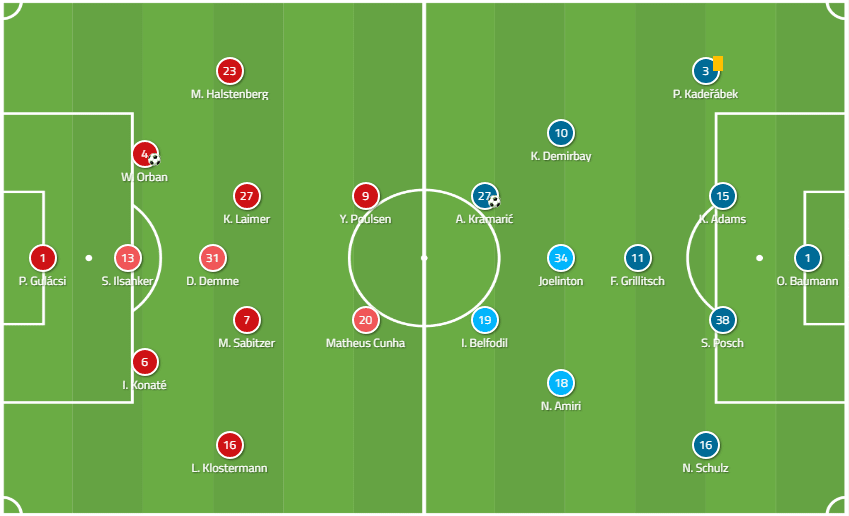
TSG Hoffenheim on the other hand lined up in a 4-3-1-2. At the back, Hoffenheim defended with a line of four. Austrian midfielder Florian Grillitsch played as a single pivot during the defensive phase and dropped between the central defenders during build-up. Up front, the tall Ishak Belfodil acted as a target man for long balls while his strike partner Andrej Kramaric used his pace to make runs behind the opposition back line. Joelinton played centrally behind the two attackers as a central offensive midfielder.
Leipzig’s offside trap
Leipzig made use of the offside trap in defence. As Hoffenheim often used up-back-through combinations, Leipzig’s defenders moved forward when Hoffenheim played back passes to midfielders. That way, Hoffenheim’s midfielders were prevented from playing passes behind Leipzig’s last line as their attackers were in offside positions.
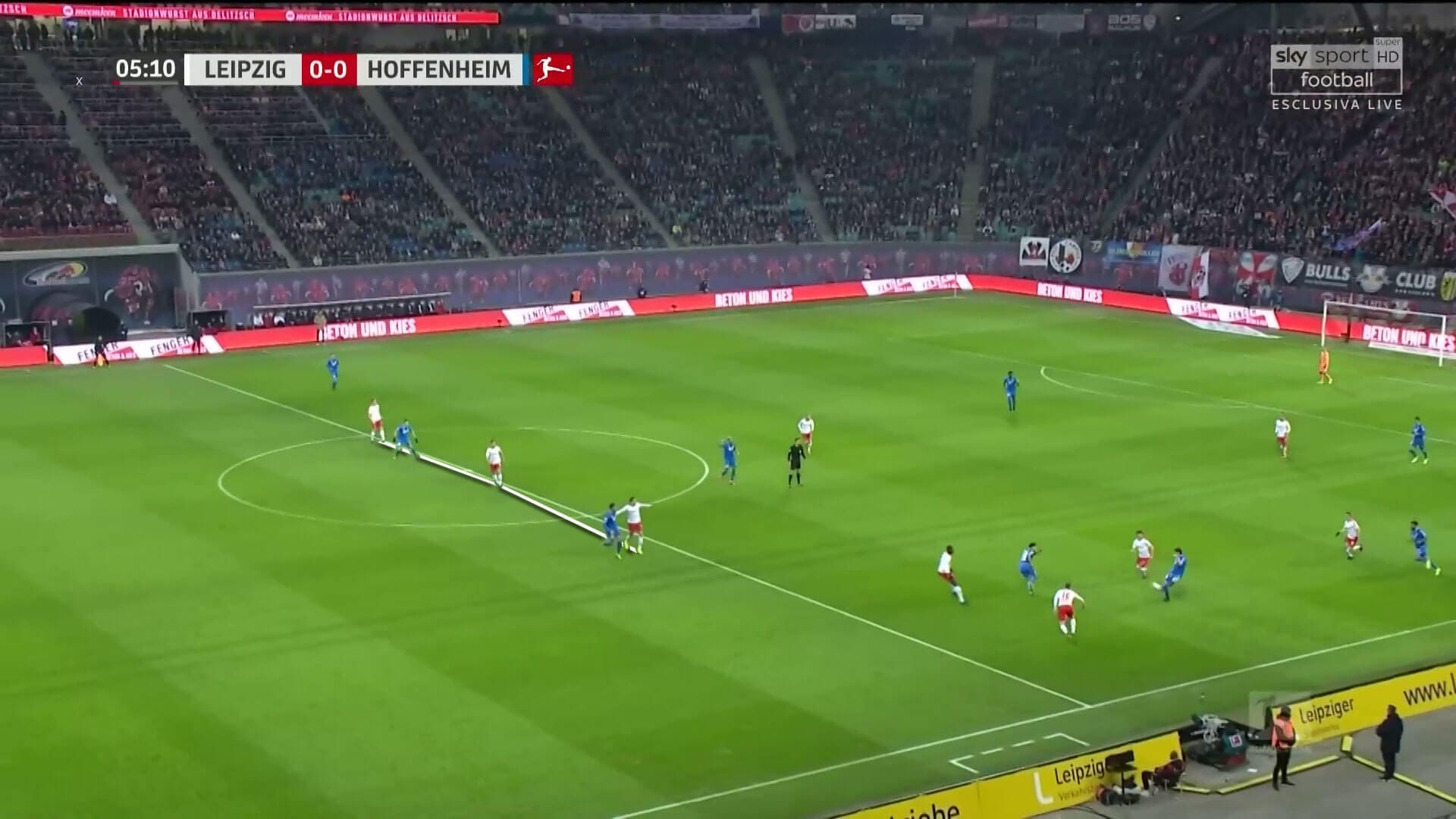
Hoffenheim’s press creates promising counter-attacks
Hoffenheim guided Leipzig’s build-up towards right centre-back Ibrahima Konaté. To do this, former Leicester City striker Kramaric marks left centre-back Willi Orban whereas Belfodil presses the middle centre-back Stefan Ilsanker.
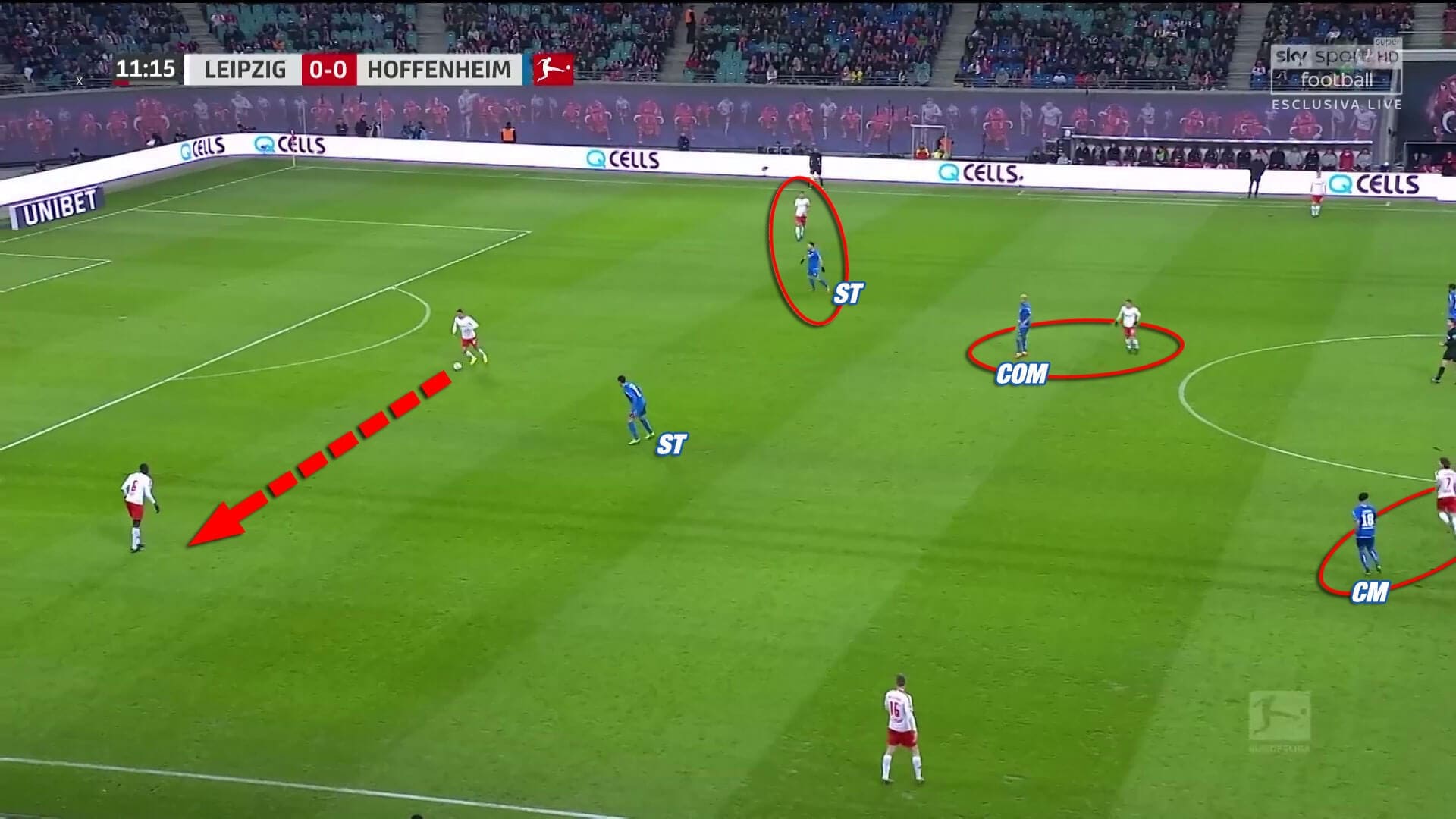
As the only spare man, Konaté receives the ball as strike duo Belfodil and Kramaric press the young defender. Whenever right wing-back Lukas Klostermann received the ball along the sideline, Hoffenheim’s left-back Nico Schulz moved forward to press. In central midfield, Julian Nagelsmann’s side used man-orientations to prevent Leipzig’s midfielders from receiving the ball.
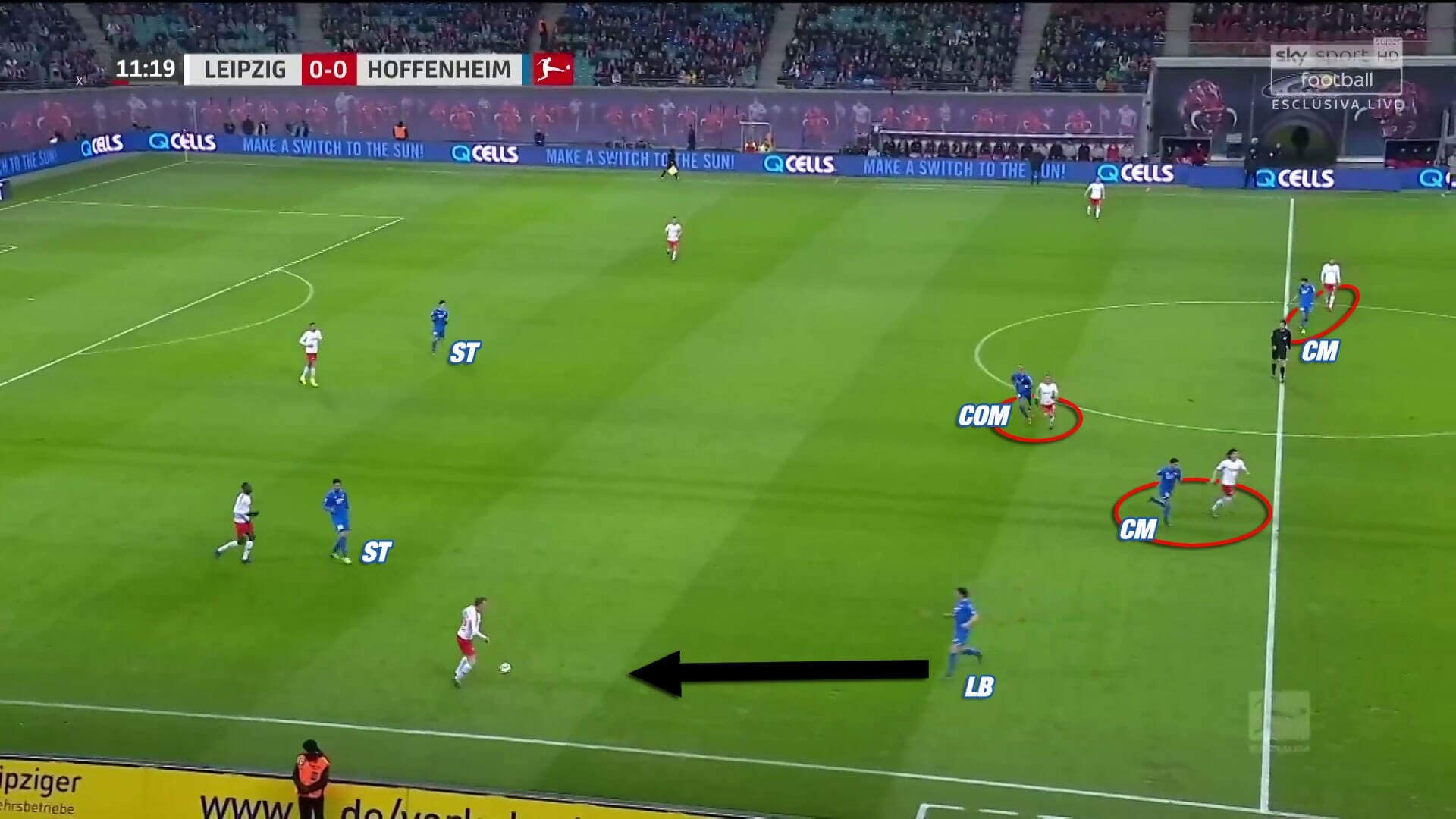
As Klostermann often had no short passing option, the German saw himself forced to play long balls. Due to good staggering, Hoffenheim’s centre-backs were able to defend these balls while covering each other.
After regaining the ball, Hoffenheim gained promising counter-attacking opportunities. As Leipzig often only had their back three behind the ball, they often defended in equal numbers during transition moments. With Belfodil, Kramaric and Joelinton, Hoffenheim had three attackers up front ready to counter-attack. In this way, Hoffenheim scored the opening goal in a 3v2 situation.
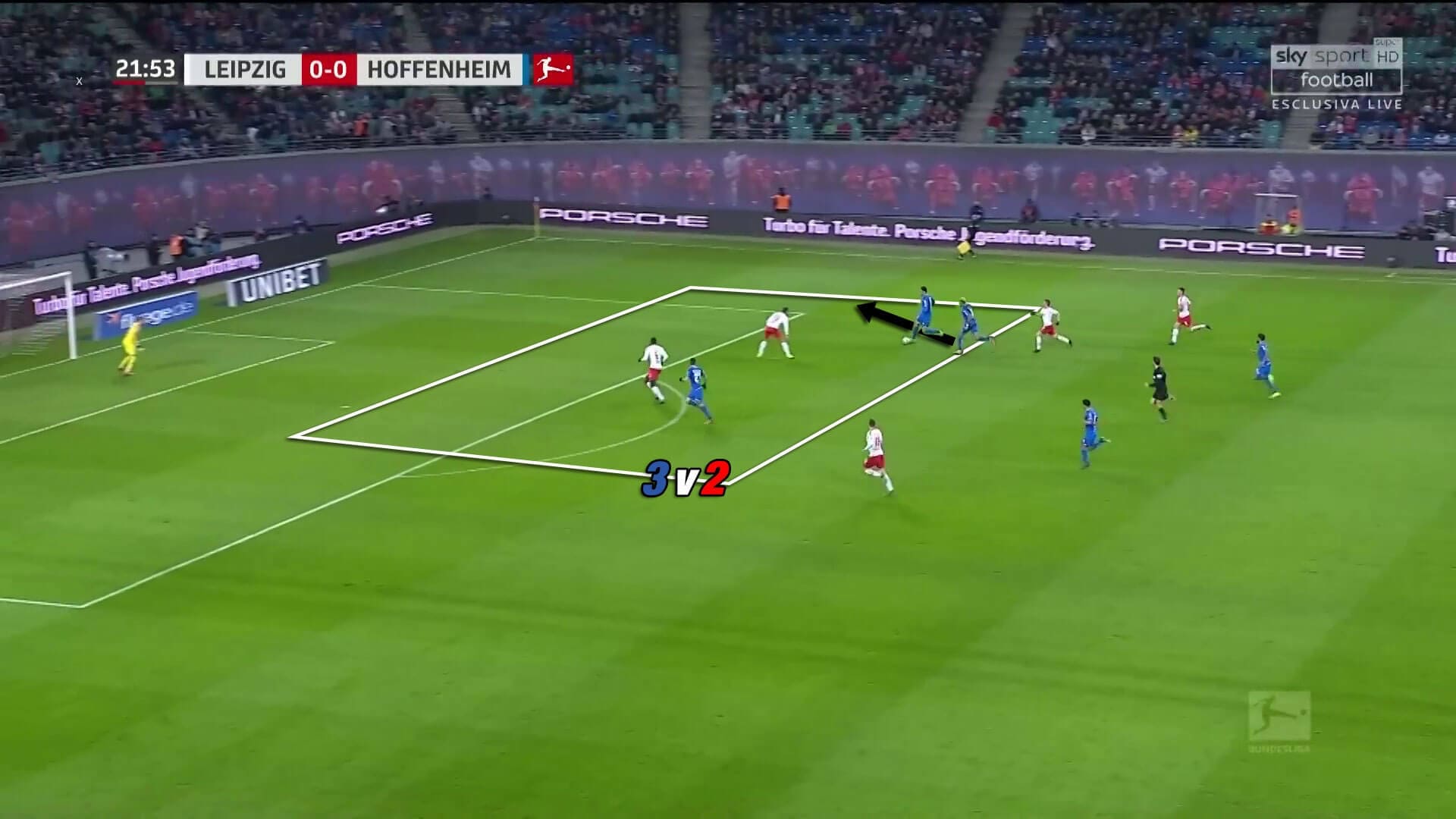
Even after the opener, Hoffenheim carved out promising counter-attacking opportunities, like the one below.
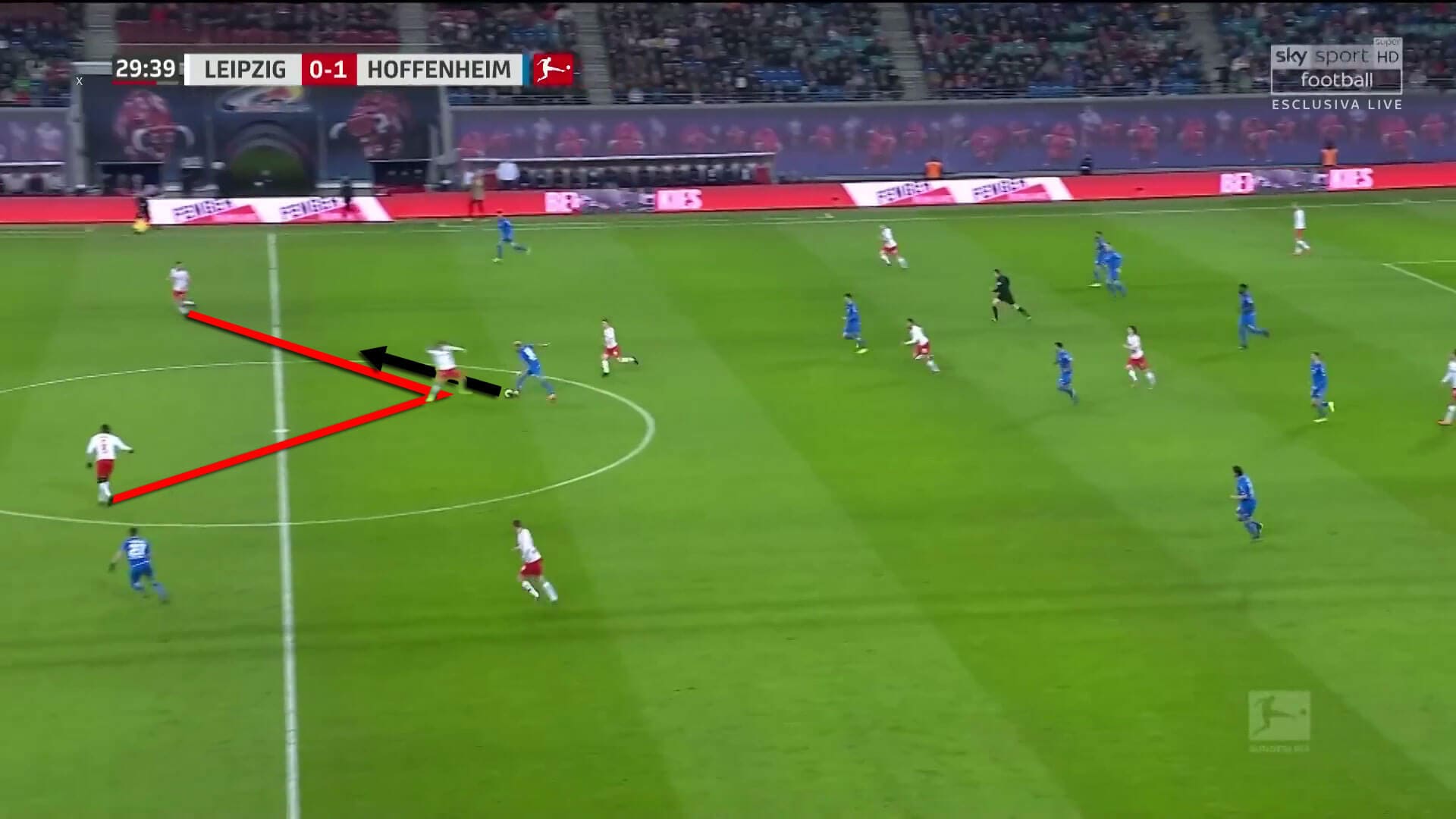
Central defender Ilsanker in particular seemed to be overwhelmed with Hoffenheim’s attacking power. Instead of dropping to protect his own goal, Ilsanker leaves the last line of defence.
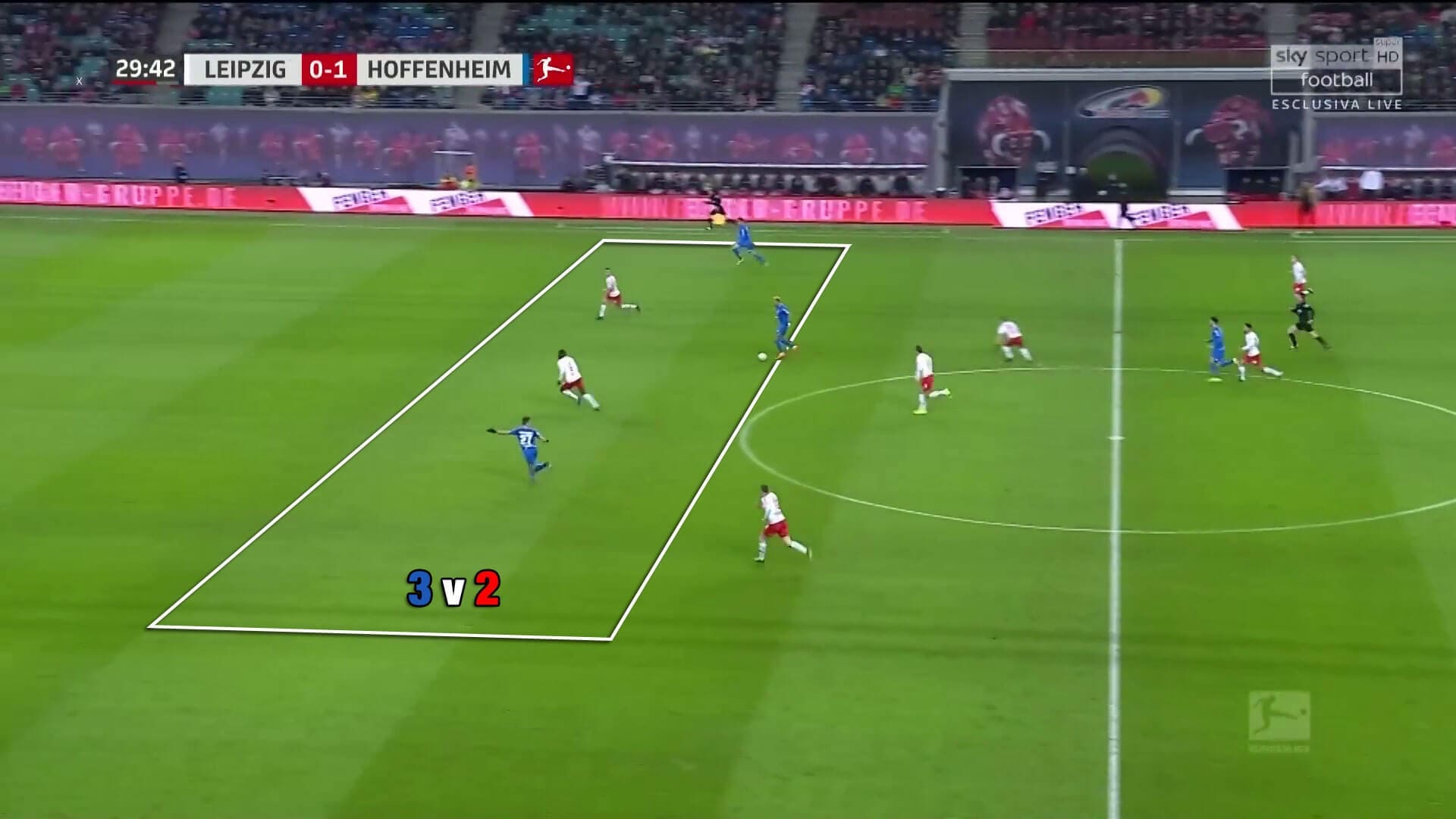
Leipzig were lucky that Hoffenheim lacked precision in the final third and therefore did not penalise this behaviour with more than one goal.
Hoffenheim’s possession phase in the first half
In build-up, Hoffenheim’s central midfielder Florian Grillitsch dropped between both central defenders to form a back-three. Hoffenheim thus created a numerical advantage against the two pressing attackers of Leipzig.
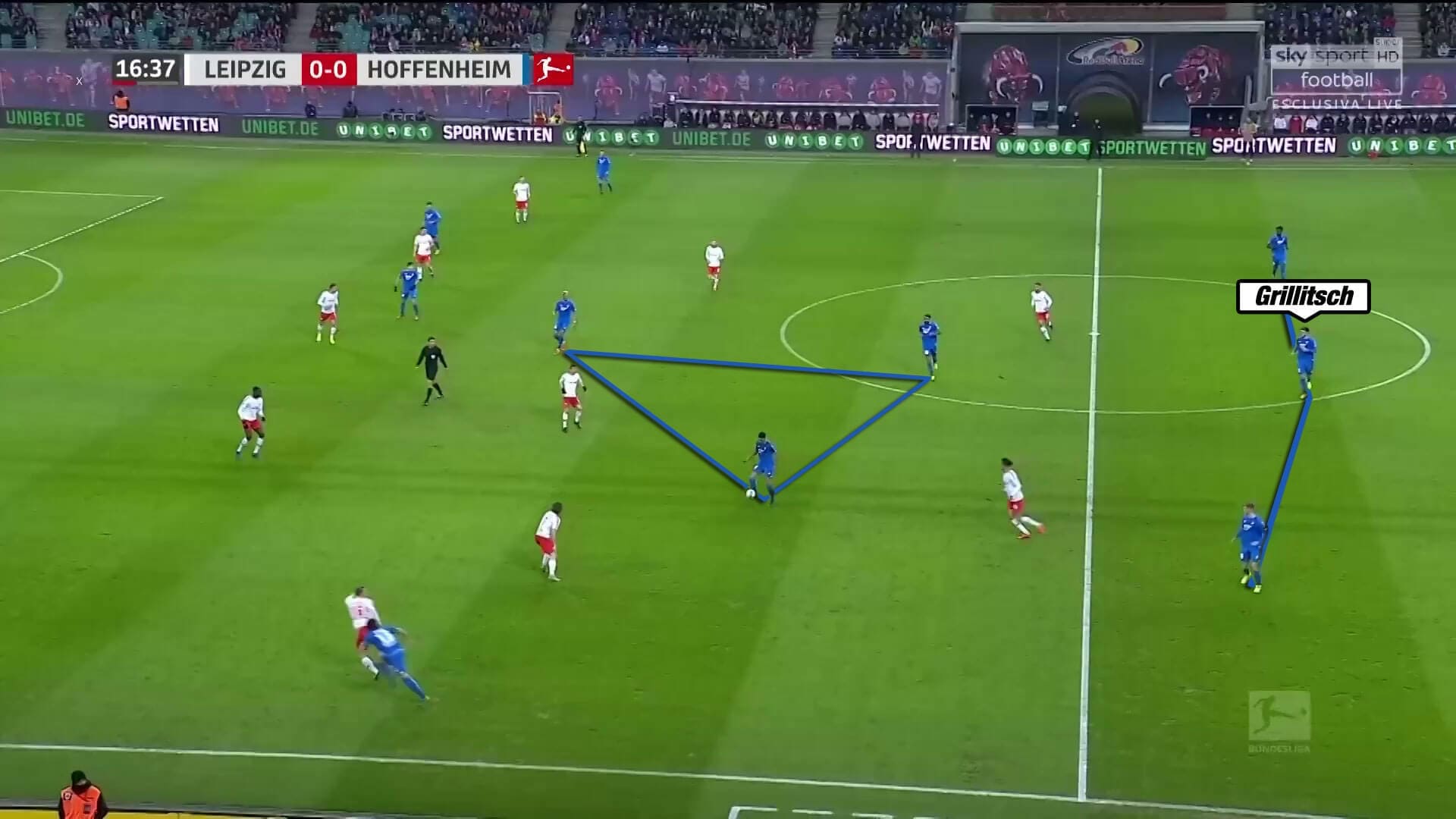
Moreover, the back-three covered the attacking runs of full-backs Nico Schulz and Pavel Kadeřábek. Both moved up the pitch in possession phases to occupy the opposition wing-backs.
In line with the common pattern of Hoffenheim under Nagelsmann, the wing-backs used diagonal runs to get behind the back line of Leipzig. In such situations one of the central midfielders played chipped balls into these areas to penetrate the last line of defence.
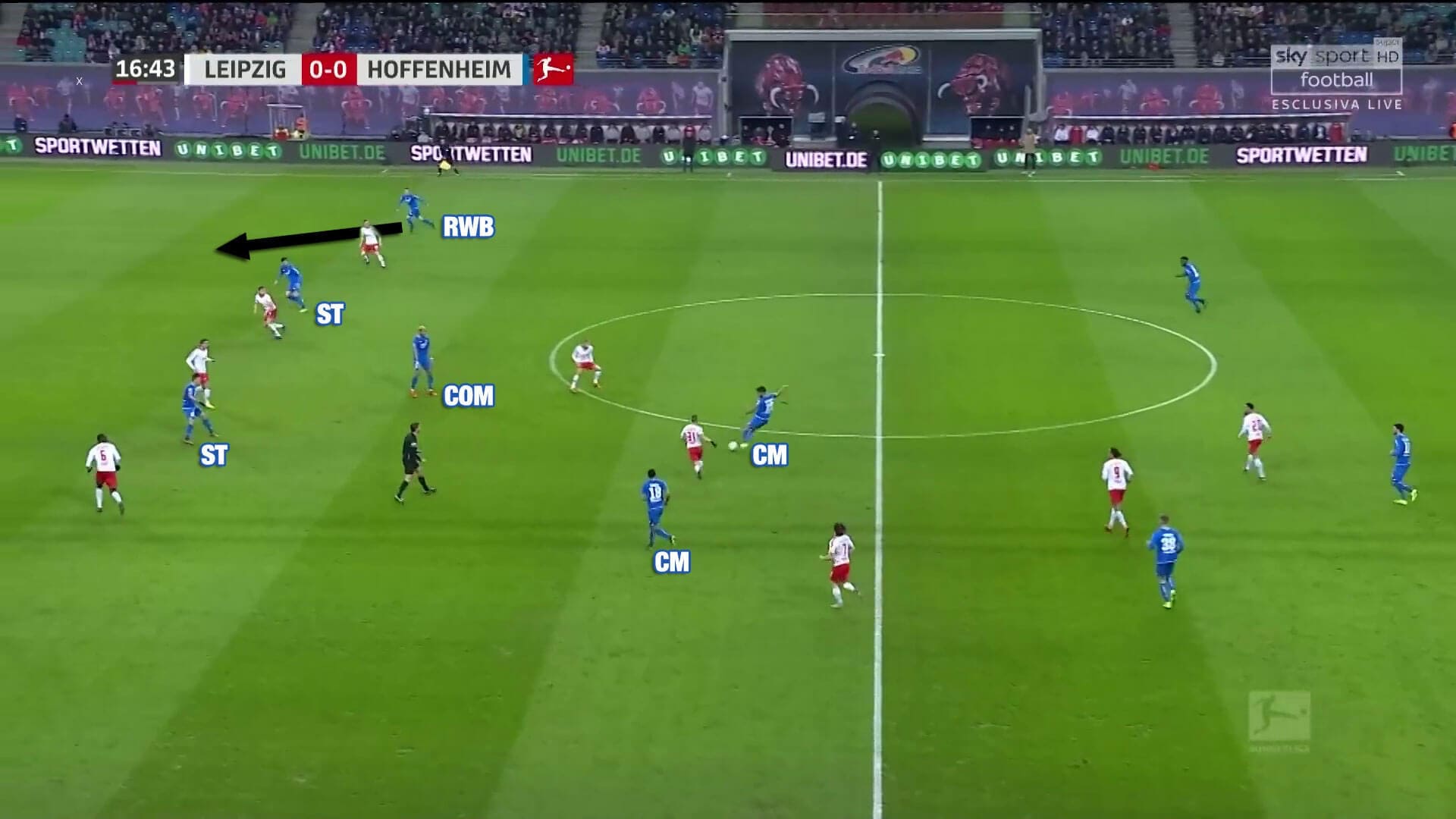
Leipzig’s domination with a 4-2-2-2
Only a few minutes before halftime, Rangnick decided to move Ilsanker into central defensive midfield as the direct opponent for Joelinton. This created a 4-4-2 formation with a midfield diamond. The four central midfielders were supposed to stabilise the centre where Leipzig had been losing too many duels in the first half.
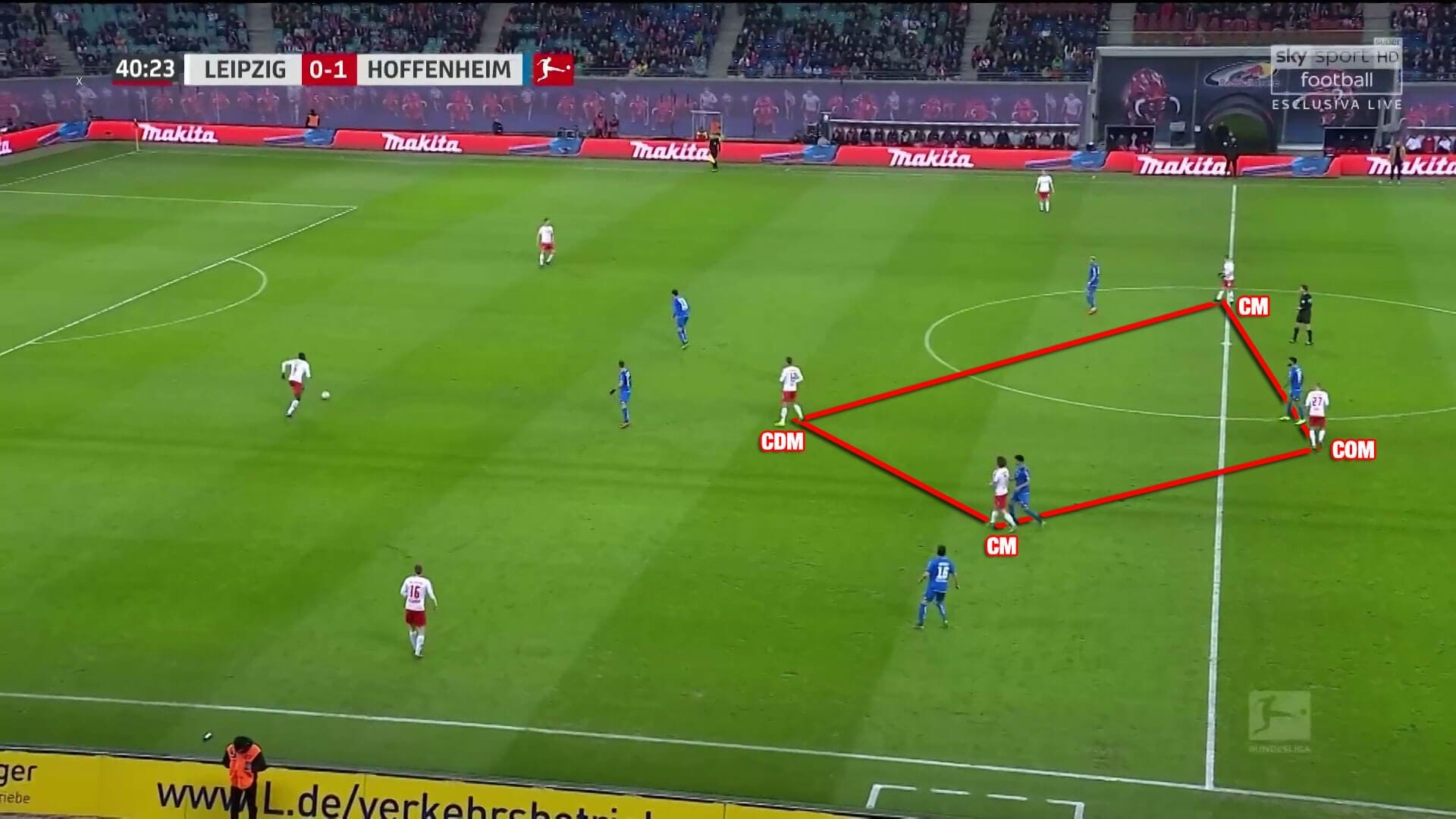
However, during half time Rangnick switched formation again. The German coach lined his team up in their typical 4-2-2-2 system in the second half. With their 4-2-2-2, Leipzig successfully pressed the opposition in wide areas. The two central midfielders were able to close down central areas. One of them dropped to mark the opposition advanced midfielder while the other one marked the opposition pivot. The near-side winger could press Hoffenheim’s wing-back and regain the ball to counter-attack with both strikers.
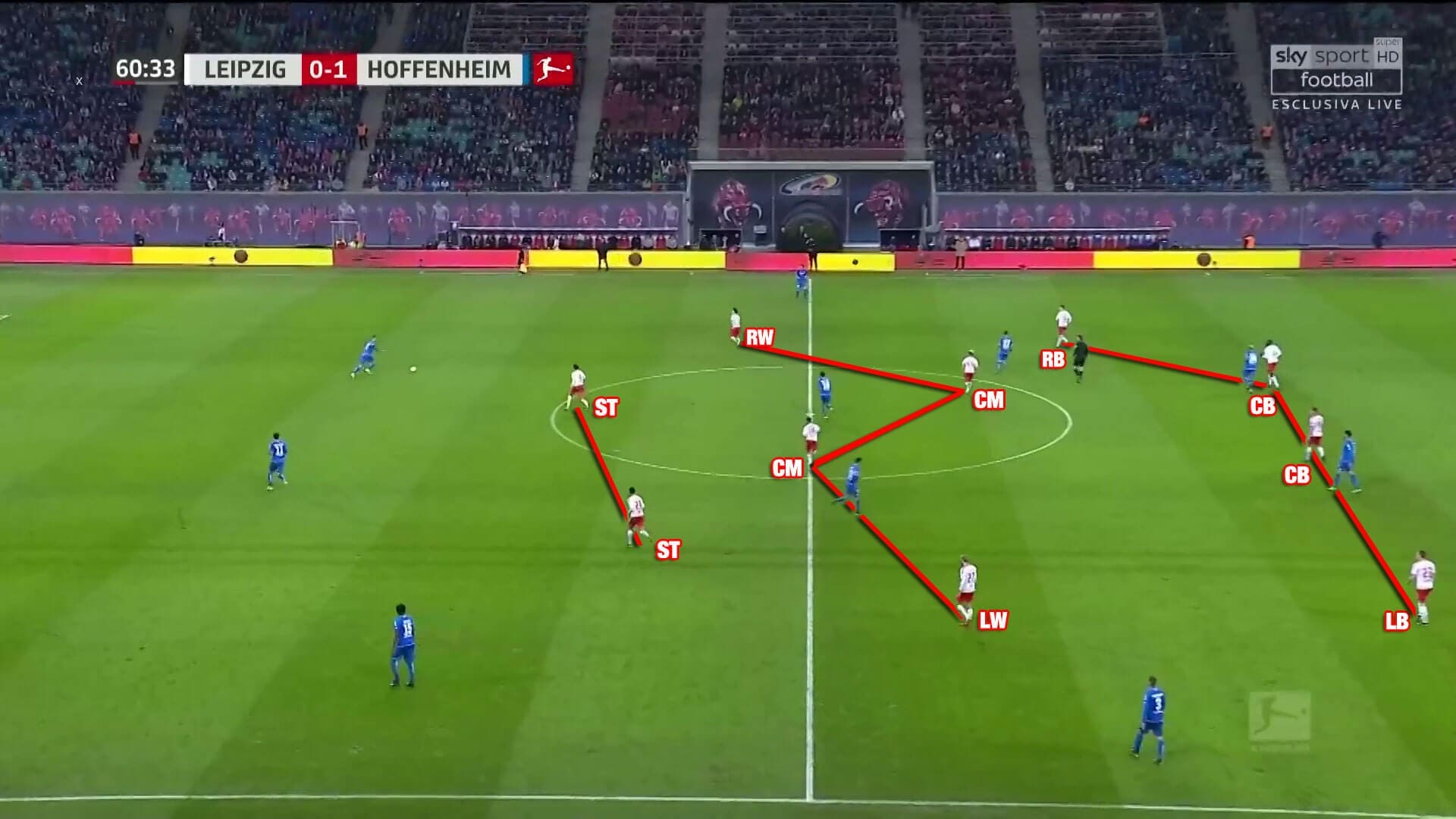
Nevertheless, Leipzig’s approach was a risky one. The home side covered their attacks with only two players at times which allowed Hoffenheim to counter-attack in equal numbers. Hoffenheim could have scored their second goal but lacked precision in the last pass or goalkeeper Péter Gulácsi saved their shots.
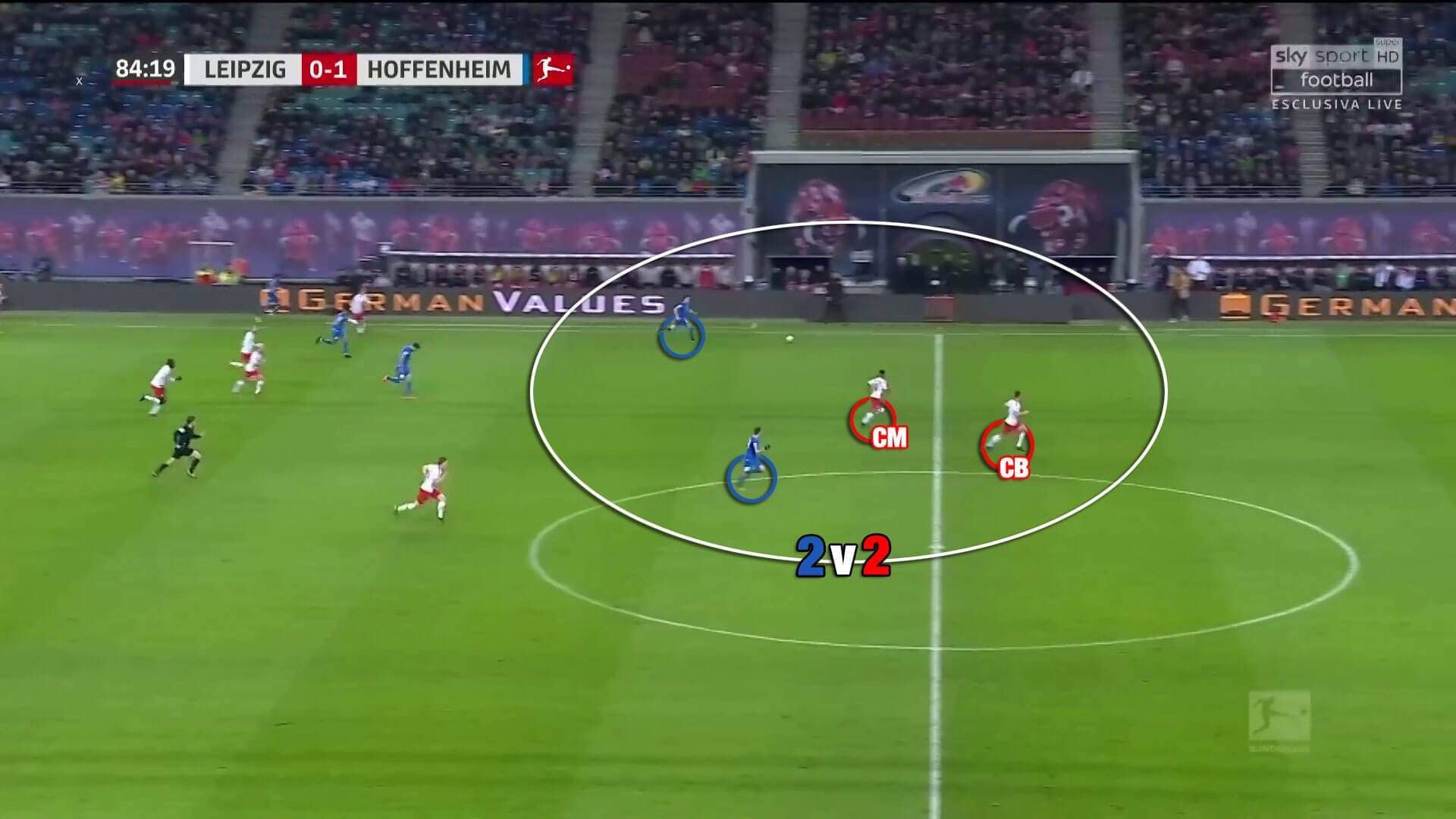
Leipzig’s dangerous wide attacks
Hoffenheim on the other hand also undertook a tactical adjustment. At the beginning of the second half, Julian Nagelsmann changed the tactical setup to a line of five at the back. That way, Hoffenheim defended in a centre-focused 5-3-2.
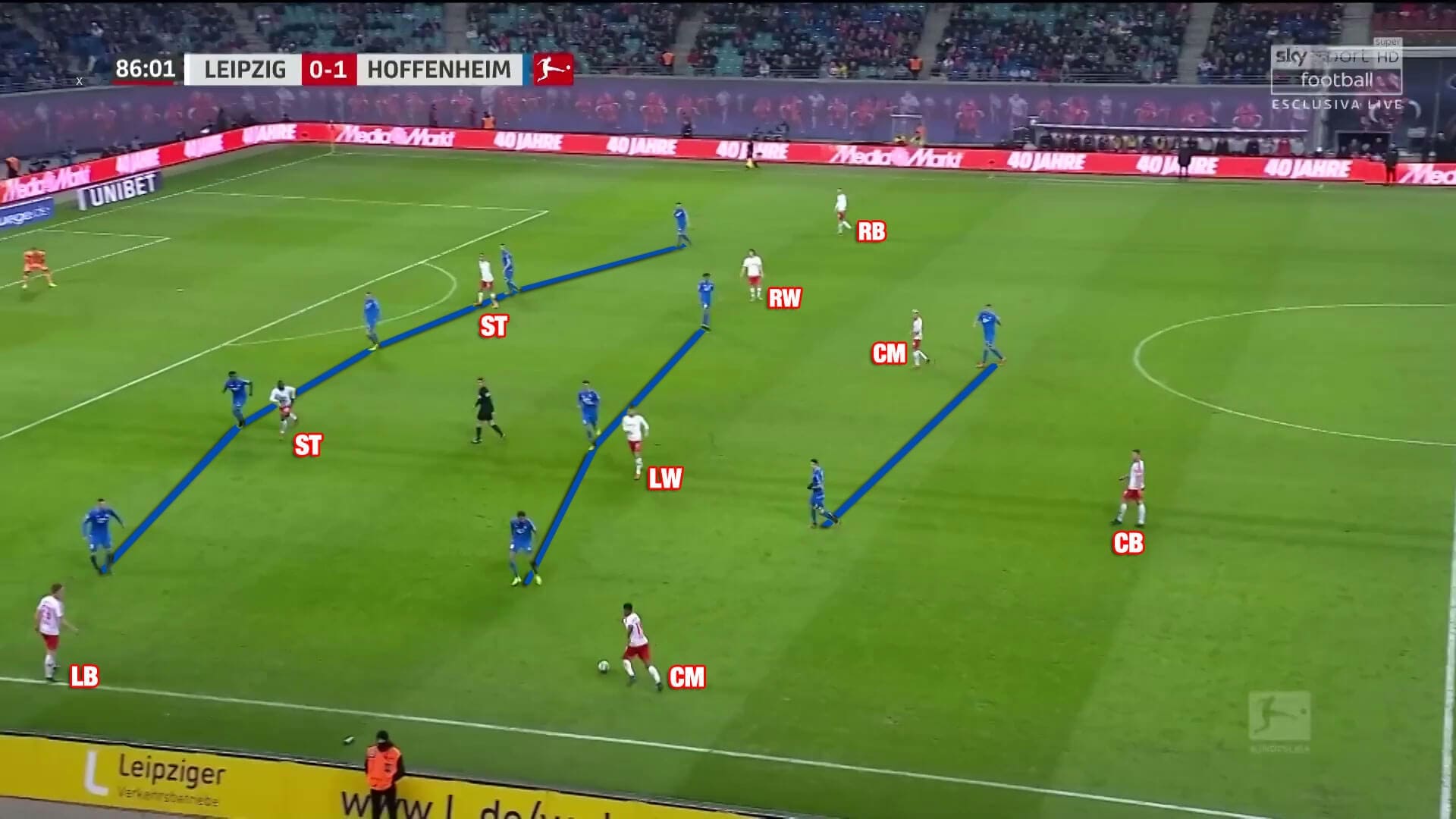
Ralf Rangnick’s side put in a lot of crosses to threaten Hoffenheim’s goal. Often Hoffenheim had to shift with two defenders towards the wing to defend the wide players of Leipzig. As Nagelsmann’s side had no wide forwards, the right centre-back had to support the wing-back on the flanks which left only three defenders in the penalty area. With clever movements, Leipzig’s attackers were able to free themselves or a teammate from the opposition defenders.
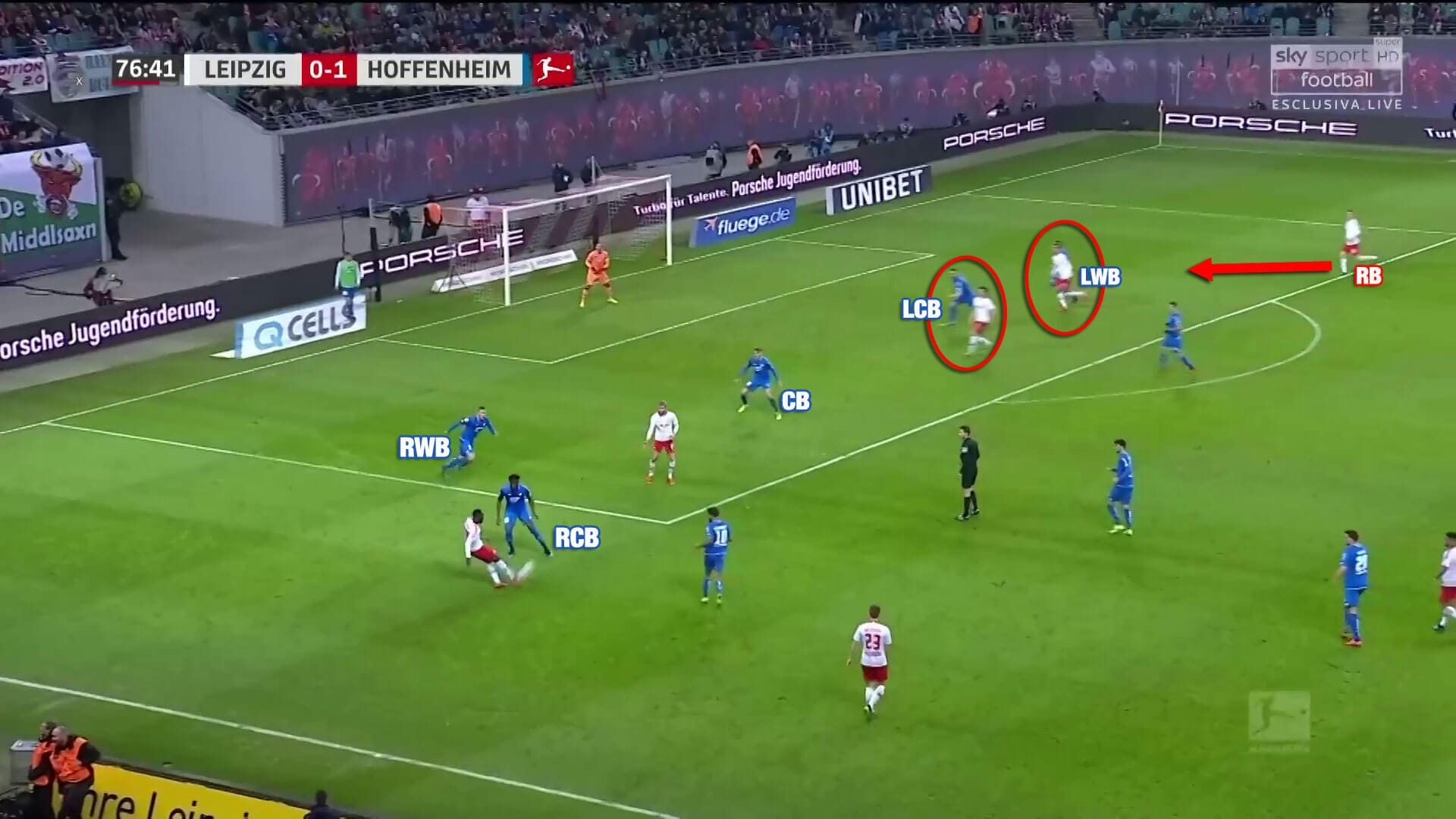
Another concept of Leipzig’s wing attacks was to play passes between defensive and midfield lines of Hoffenheim. Due to the flat shape of Hoffenheim’s back five and a missing defensive midfield, Leipzig often found space between the lines after breaking through on the wing.
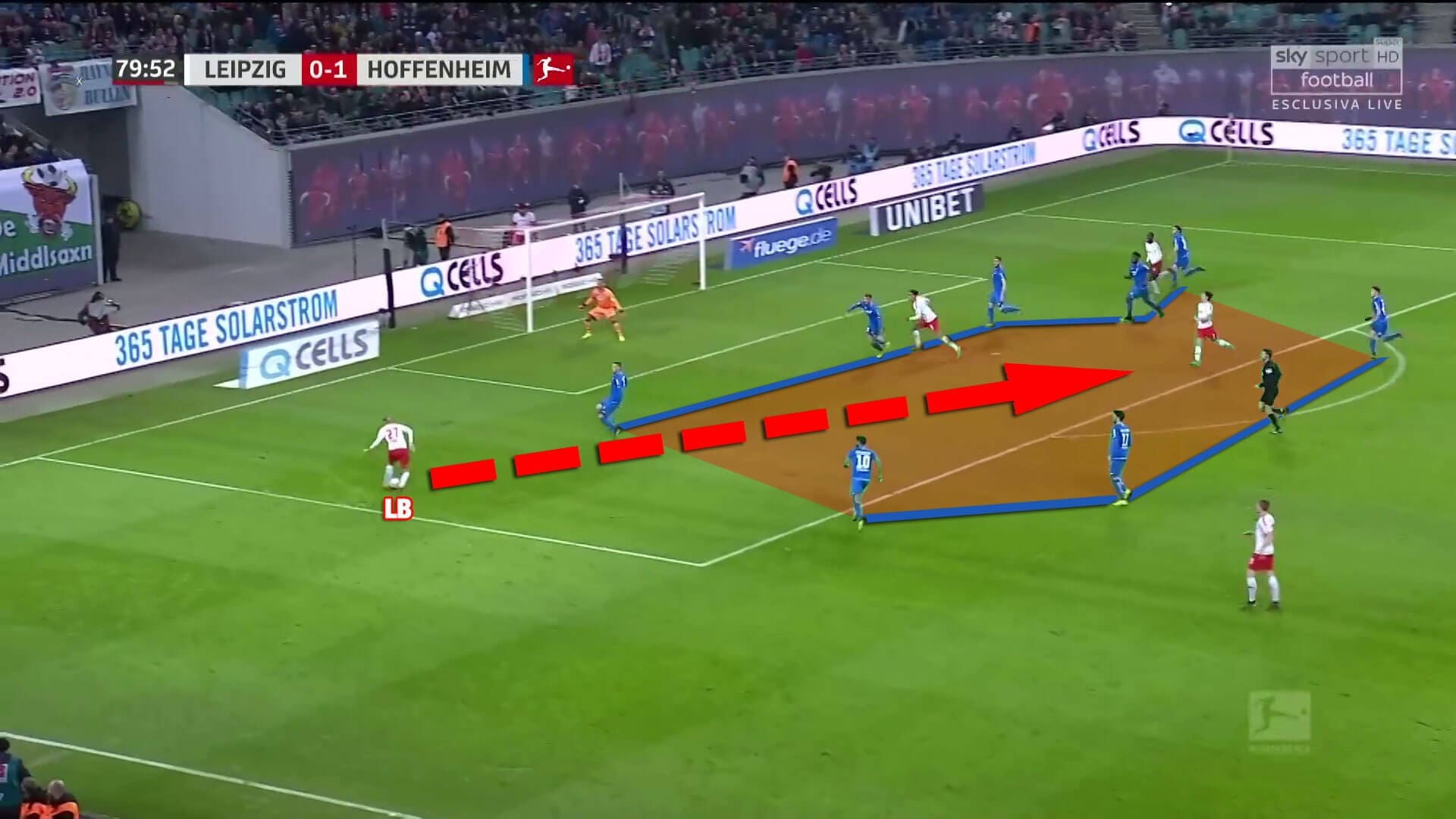
Since Leipzig were able to dominate most parts of the second half, the home side were able to create several goalscoring opportunities. However, it took Leipzig until the 89th minute to score the equaliser. By tucking inside, left winger Konrad Laimer dragged Kadeřábek away from the wing. With an overlapping run, left-back Marcel Halstenberg utilised the free space.
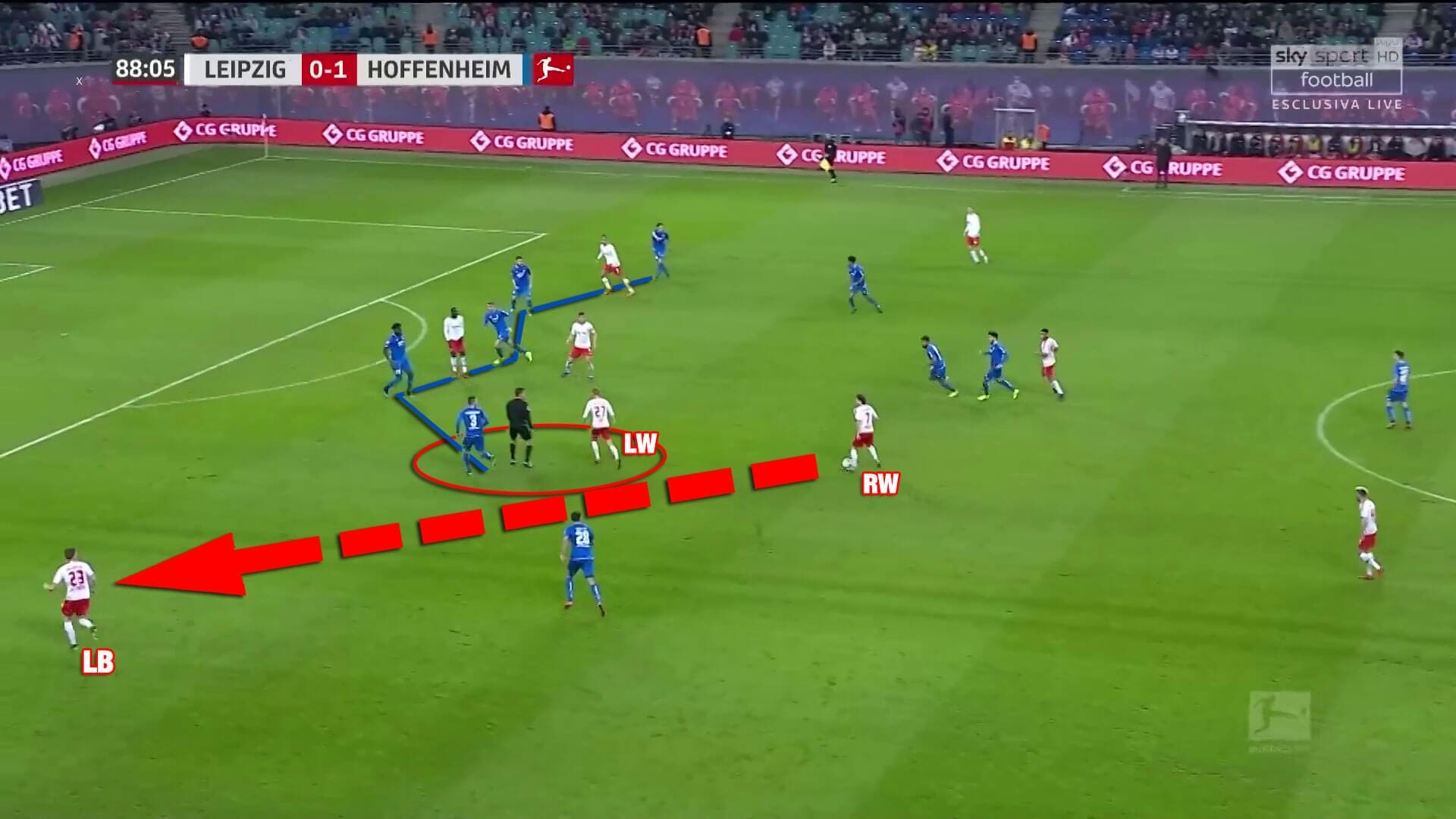
When Halstenberg received the ball, Hoffenheim missed again to close the central area between the defensive line and midfield line. As central defender Willi Orban moved into this space, he was able to finish from a central position and score the late equaliser for Leipzig.
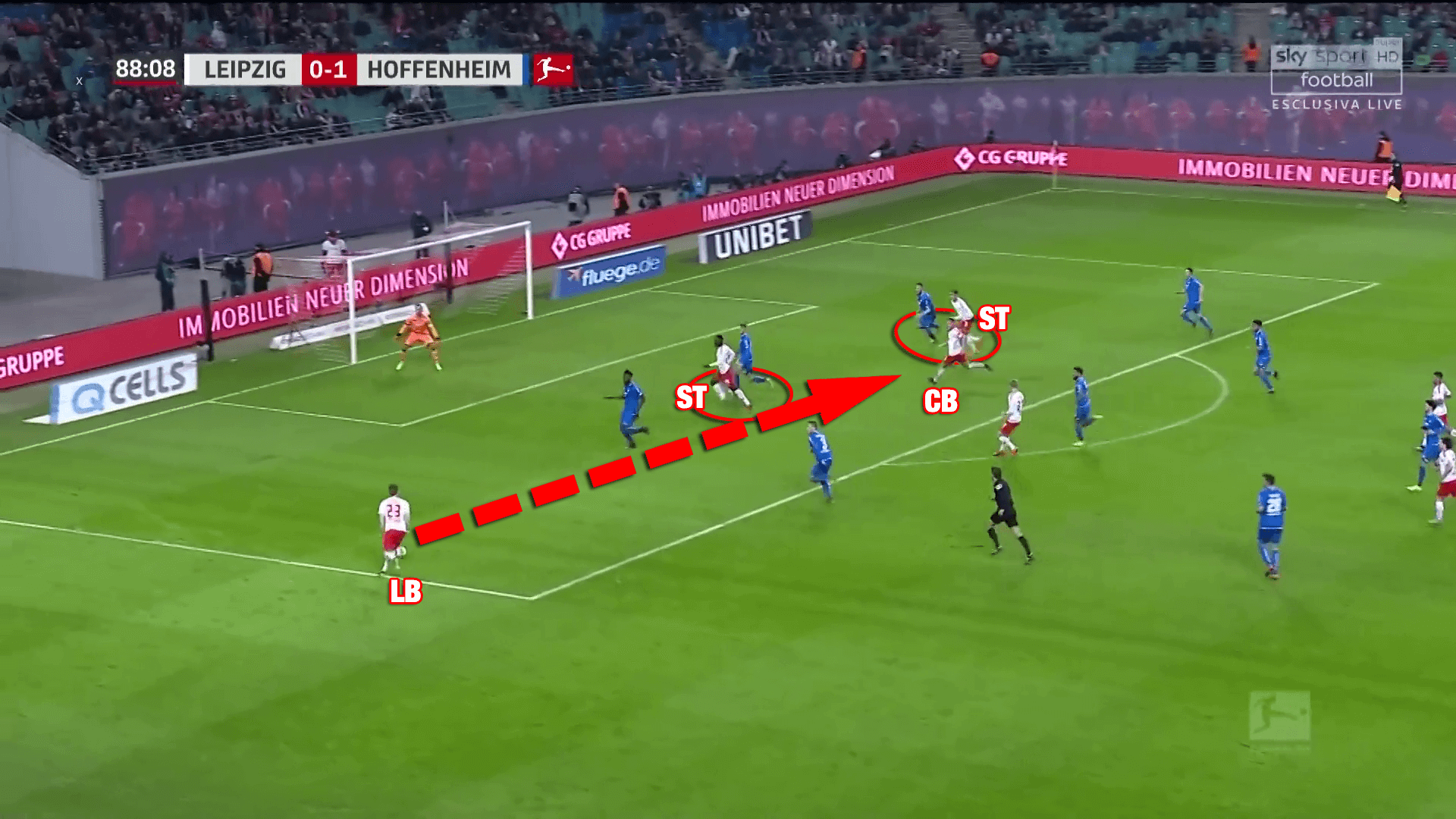
Conclusion
Rangnick’s clever tactical adjustment enabled Leipzig to find their way back into the game. The 4-2-2-2 system enabled the full-backs of Leipzig to get more space as the winger occupied the opposition wing-back. This approach led to several dangerous wing attacks, one of which resulted in Orban’s late equaliser.
Hoffenheim were capable of dominating the first half with their midfield superiority playing in a 4-3-1-2. In the second half, Nagelsmann’s side struggled to defend in wide areas with their 5-3-2 system. Moreover, Hoffenheim were not able to penalise Leipzig’s insufficient cover due to lacking precision in counter-attacks.
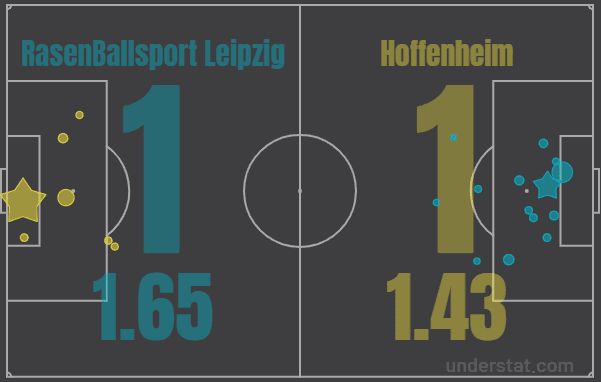
All in all, the game ended with a fair draw as both teams had the upper hand for one half.
If you love tactical analysis, then you’ll love the digital magazines from totalfootballanalysis.com – a guaranteed 100+ pages of pure tactical analysis covering topics from the Premier League, Serie A, La Liga, Bundesliga and many, many more. Buy your copy of the February issue for just ₤4.99 here, or even better sign up for a ₤50 annual membership (12 monthly issues plus the annual review) right here.

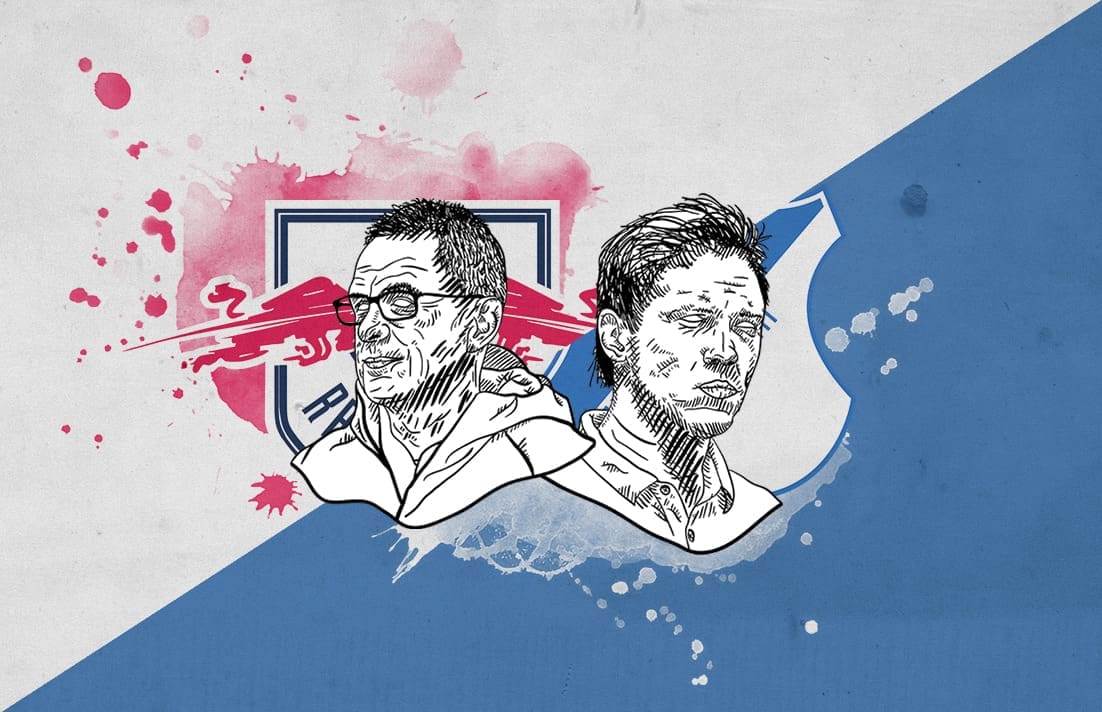



Comments